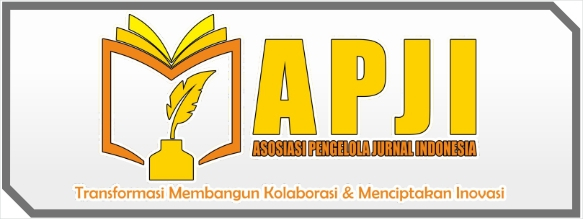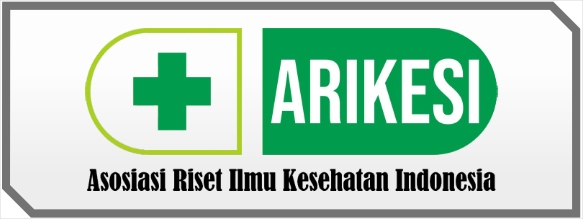Penerapan Mobilisasi dalam Pencegahan Dekubitus dengan Jam Mobilisasi pada Lansia Stroke di RSUD Kabupaten Sragen
DOI:
https://doi.org/10.55606/termometer.v1i4.2347Keywords:
Decubitus, Elderly, Mobilization, StrokeAbstract
Background: The majority of stroke patients are in the age range of 55 years old and above. Someone who suffers from a stroke and does not immediately get assessed may experience changes in mental status, impaired speech due to facial paralysis, visual perceptual disturbances, and body paralysis, which can lead to the development of decubitus ulcers. Decubitus ulcers occur resulting from the prolonged pressures on the soft tissues that happen on bony areas against solid surfaces. The prevention of decubitus ulcers involves repositioning and mobilization. Repositioning or mobilization can also improve muscle strength and promote independence. Objective: The aim of this study is to describe the comparative final outcomes between two respondents in terms of the scale of decubitus risk before and after the implementation of mobilization. Method: A descriptive research design with a case study approach, conducted on two respondents. Results: Before the implementation of mobilization, both respondents were at moderate risk of developing decubitus ulcers. After repositioning every two hours for six days, both respondents had a low scale risk of developing decubitus ulcers and decubitus ulcers can be prevented. Conclusion: Mobilization has an influence on the degree of decubitus ulcers development in elderly stroke patients.
Downloads
References
Badan Penelitian dan Pengembangan Kesehatan. (2019). Laporan Riskesdas 2018 (Provinsi). https://drive.google.com/drive/folders/1XYHFQuKucZIwmCADX5ff1aDhfJgqzI-l
Dinas Kesehatan Provinsi Jawa Tengah. (2021). Profil Kesehatan Provinsi Jawa Tengah 2020. https://dinkesjatengprov.go.id/v2018/dokumen/Profil2020/mobile/index.html
Faridah, U., Sukarmin, S., & Murtini, S. (2019). Pengaruh Posisi Miring terhadap Dekubitus pada Pasien Stroke di RSUD RAA Soewondo Pati. Jurnal Ilmu Keperawatan dan Kebidanan, 10(1), 155–162. http://ejr.stikesmuhkudus.ac.id/index.php/jikk/article/view/632
Hamdana, Amin, N., & Karim, S. S. (2021). Hubungan Penggunaan Matras Anti Dekubitus Dengan Integritas Kulit Pada Pasien Stroke Di Rsud Sulthan Daeng Radja Kabupaten Bulukumba. Jurnal Rumpun Ilmu Kesehatan, 1(3), 66–72. https://ejurnal.politeknikpratama.ac.id/index.php/JRIK/article/view/95
Herly, H. N., Ayubbana, S., & Sari, S. A. (2021). Pengaruh Posisi Miring Untuk Mengurangi Resiko Dekubitus Pada Pasien Stroke. Jurnal Cendikia Muda, 1(3), 293–298. https://www.jurnal.akperdharmawacana.ac.id/index.php/JWC/article/view/215
Krisnawati, D., Faidah, N., & Purwandari, N. P. (2022). Pengaruh Perubahan Posisi terhadap Kejadian Decubitus pada Pasien Tirah Baring di Ruang Irin Rumah Sakit Mardi Rahayu Kudus. The Shine Cahaya Dunia D-III Keperawatan, 7(01), 2775–1163. https://ejournal.annurpurwodadi.ac.id/index.php/TSCD3Kep/article/view/332
Mahmuda, I. N. N. (2019). Pencegahan dan Tatalaksana Dekubitus pada Geriatri. Biomedika, 11(1), 11–17. https://doi.org/10.23917/BIOMEDIKA.V11I1.5966
Mutiarasari, D. (2019). Ischemic Stroke: Symptoms, Risk Factors, and Prevention. Medika Tadulako: Jurnal Ilmiah Kedokteran Fakultas Kedokteran dan Ilmu Kesehatan, 6(1), 60–73. http://jurnal.untad.ac.id/jurnal/index.php/MedikaTadulako/article/view/12337
Oktarina, Y., Nurhusna, Kamariyah, & Mulyani, S. (2020). Edukasi Kesehatan Penyakit Stroke pada Lansia. Medical Dedication (medic) : Jurnal Pengabdian kepada Masyarakat FKIK UNJA, 3(2), 106–109. https://doi.org/10.22437/MEDICALDEDICATION.V3I2.11220
Retnaningsih, D. (2023). Asuhan Keperawatan pada Pasien Stroke. Penerbit NEM. https://books.google.co.id/books?id=iYW7EAAAQBAJ&pg=PA8&dq=penyebab+stroke&hl=id&newbks=1&newbks_redir=0&sa=X&ved=2ahUKEwjWxpKsq5r_AhVt1zgGHQIoB_s4ChDoAXoECAgQAg#v=onepage&q=penyebab stroke&f=true
Ridwan, M. (2017). Mengenal, Mencegah, dan Mengatasi Silent Killer, Stroke. Romawi Pustaka. https://books.google.co.id/books?id=57JVEAAAQBAJ&pg=PT3&dq=Mengenal,+Mencegah,+dan+Mengatasi+Silent+Killer,+Stroke&hl=id&newbks=1&newbks_redir=0&sa=X&ved=2ahUKEwilrMat_5L_AhXS3jgGHflTBjEQ6AF6BAgJEAI#v=onepage&q=Mengenal%2C Mencegah%2C dan Mengatasi Silent Killer%2C Stroke&f=false
Riskawaty, H. M., & Yulianingsih, A. (2022). Pengaruh mobilisasi sim terhadap kejadian dekubitus pada pasien stroke di Ruang Stroke Center RSUD Kota Mataram. JOURNAL OF Mental Health Concerns, 1(2), 58–66. https://doi.org/10.56922/MHC.V1I2.298
Simanjuntak, T. R., Purnama, A., Studi, P., Keperawatan, I., Tinggi, S., Kesehatan, I., & Maju, I. (2020). Efektivitas Mobilisasi Miring Kiri Miring Kanan Dalam Upaya Pencegahan Pressure Injury Pada Pasien Sepsis Di Ruang Instalasi Pelayanan Intensif. Jurnal Keperawatan Komprehensif (Comprehensive Nursing Journal), 6(1), 35–44. https://doi.org/10.33755/JKK.V6I1.160
Sulistiyawati, A. (2023). Mencegah Luka Tekan pada Pasien Stroke. Penerbit NEM. https://books.google.co.id/books?id=HIW9EAAAQBAJ&pg=PA36&dq=stroke+adalah&hl=id&newbks=1&newbks_redir=0&sa=X&ved=2ahUKEwj_ru_NmJr_AhWW-DgGHWujBlw4ChDoAXoECAgQAg#v=onepage&q=stroke adalah&f=false
Susanto, W. H. A., Suprapto, Saherna, J., Sartika, D., Zuriati, Latri, N. K. W. D., & Yanti, N. (2023). Perawatan Luka Pada Kulit Kronis. Global Eksekutif Teknologi. https://books.google.co.id/books?id=u4inEAAAQBAJ&pg=PA169&dq=pengertian+dekubitus&hl=id&newbks=1&newbks_redir=0&sa=X&ved=2ahUKEwiQqMP8l5__AhUk8jgGHUVKAPIQ6AF6BAgIEAI#v=onepage&q=pengertian dekubitus&f=false
Tunik, Anam, A. K., & Niningasih, R. (2022). Perawatan Post Hospitalisasi : Pasien Stroke yang Mengalami Imobilisasi. Media Nusa Creative (MNC Publishing). https://books.google.co.id/books?id=T1W3EAAAQBAJ&pg=PA13&dq=pengkajian+stroke&hl=id&newbks=1&newbks_redir=0&sa=X&ved=2ahUKEwiazoXO9rD_AhXLW2wGHefCD0EQ6AF6BAgKEAI#v=onepage&q&f=false
Wardani, E. M., & Nugroho, R. F. (2022). Implementasi Masase Neuroperfusi dan Alih Baring Terhadap Risiko Dekubitus Pasien Post Stroke. Sehatmas: Jurnal Ilmiah Kesehatan Masyarakat, 1(1), 09–15. https://doi.org/10.55123/SEHATMAS.V1I1.28
Downloads
Published
How to Cite
Issue
Section
License
Copyright (c) 2023 Melyana Okta Apriani, Erika Dewi Noorratri

This work is licensed under a Creative Commons Attribution-ShareAlike 4.0 International License.










